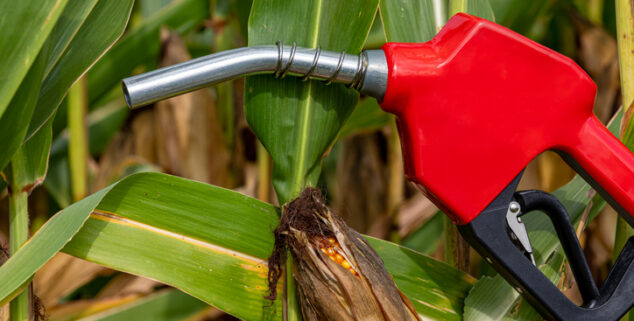Opinion
The rise and fall of a once promising biofuel
 Image by JJ Gouin.
Image by JJ Gouin. Capitol Weekly welcomes Opinions on California public policy or politics. Click here for more information about submitting an Op-Ed.
OPINION – Late last year, the California Air Resources Board updated the state’s Low Carbon Fuel Standard (LCFS), which aims to reduce the carbon intensity (i.e., greenhouse gas emissions) from the diesel fuel and gasoline sold in the state. The Board’s decision created controversy regarding the additional costs consumers will pay at the pump, though just how much more is a matter of contentious debate.
Defending the LCFS update, which took effect on July 1, the Board recently downplayed the cost impact and maintained that the “LCFS has been very effective to date, reducing carbon in California’s fuel mix by almost 13% and displacing 75% of the diesel used in the state with cleaner alternatives.” In fact, the vast majority of the 13% carbon reduction came from petroleum diesel alternatives, especially from renewable diesel – and not from gasoline.
When Gov. Arnold Schwarzenegger established the LCFS in a 2007 executive order, there were significant expectations for reducing the carbon intensity of gasoline by adding ethanol from cellulosic biomass – that is, biofuel from crop residue, wood waste, and other plant matter, much of which could come from lands unsuitable for agricultural or after-harvest crop remnants.
In 2008, Board chair Mary Nichols asserted that “Ethanol will play a key role in California’s clean, renewable fuels future.” Unlike its corn-based counterpart, “cellulosic ethanol promises to provide energy with little or no greenhouse gas emissions.”
Schwarzenegger’s executive order came on the heels of the federal government’s Renewable Fuel Standard (RFS), and in 2007 the RFS added a cellulosic ethanol production requirement for 16 billion gallons of cellulosic ethanol by 2022. But 15 years later, that RFS requirement dropped to just 630 million gallons of cellulosic biofuels.
What caused the precipitous decline in the requirement? In 2022, David Mark Kramer, a biochemist at Michigan State University, described how government officials had “vastly overestimated the readiness of cellulosic technology, even as government and private money poured into research and development.”
Kramer noted that the U.S. Department of Energy (DOE) contributed to that overestimation. In a major 2016 report, DOE contended that “advanced technologies now enable the production” of cellulosic ethanol from “biorefineries capable of efficiently converting a broad range of biomass feedstocks into commercially viable second-generation biofuels.”
Lee Lynd, an engineering professor at Dartmouth College and co-founder of a failed cellulosic-ethanol company, said that DOE was a primary sponsor of projects and “was pushing very hard for them to be big.” The cellulosic-ethanol field, he maintained, “got overheated because each of the parties—the sponsors, technology providers, and investors—were all saying, ‘Let’s go big or go home,’ and we ended up going home.”
Indeed, the commercial prospects for cellulosic biofuels declined after the DOE report. In 2017, a prominent energy consulting firm dismissed cellulosic ethanol as “still under development.” The authors of a 2021 article in the Journal of Environmental Management averred that biofuels such as cellulosic ethanol needed “novel technology” to expand “production to fulfill the current and future energy demand.”
The 2007 RFS rule that mandated 16 billion gallons of cellulosic ethanol by 2022 indicated that it would pass corn ethanol as the primary source of the nation’s ethanol in gasoline. However, in 2022, 83% of California’s ethanol came from corn, and only 12 percent came from cellulosic fibers and biomass, and almost none was used in other states.
Seven years earlier, CARB, much like DOE the following year, had claimed that “cellulosic technology providers have successfully reached commercial scale” and cited a report maintaining production could “easily double or triple” in the next 20 years.” However, in the 2024 LCFS update, the big plans for cellulosic biofuel are gone along with the once-touted potential for reduced fuel costs for consumers resulting from the LCFS.
To be clear, CARB, DOE and others were right to pursue the commercial potential of cellulosic biofuels, but by 2014-15 there were ample indications that the results of those efforts were coming up short. However, key stakeholders got too far over their skis on the steep slope of technological maturity, capacity, and costs. In such circumstances, making a correction is hard, but not making one all but ensures a more disappointing outcome.
Kurt Schuparra served in the administrations of California governors Gray Davis, Arnold Schwarzenegger, and Jerry Brown, and in the state legislature.
Want to see more stories like this? Sign up for The Roundup, the free daily newsletter about California politics from the editors of Capitol Weekly. Stay up to date on the news you need to know.
Sign up below, then look for a confirmation email in your inbox.

Leave a Reply